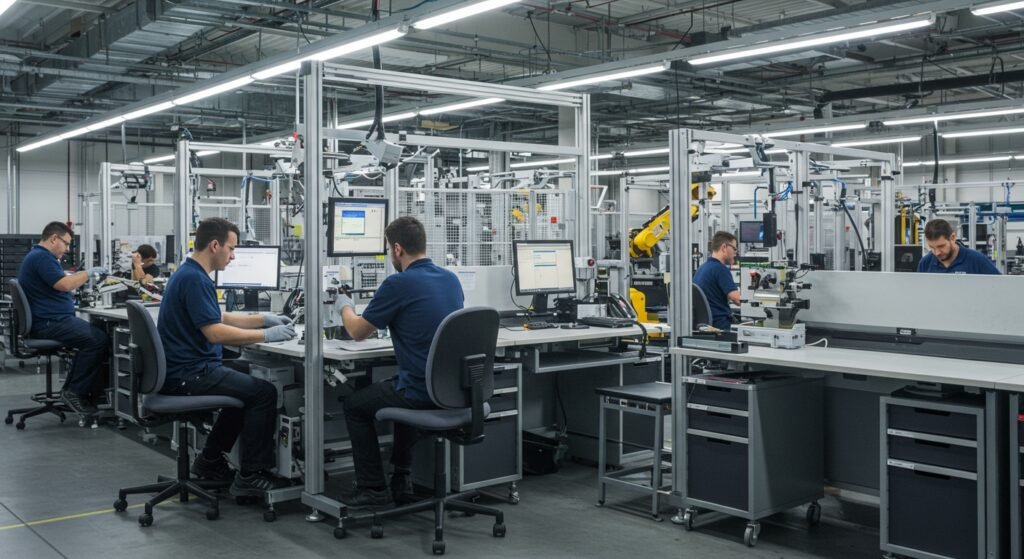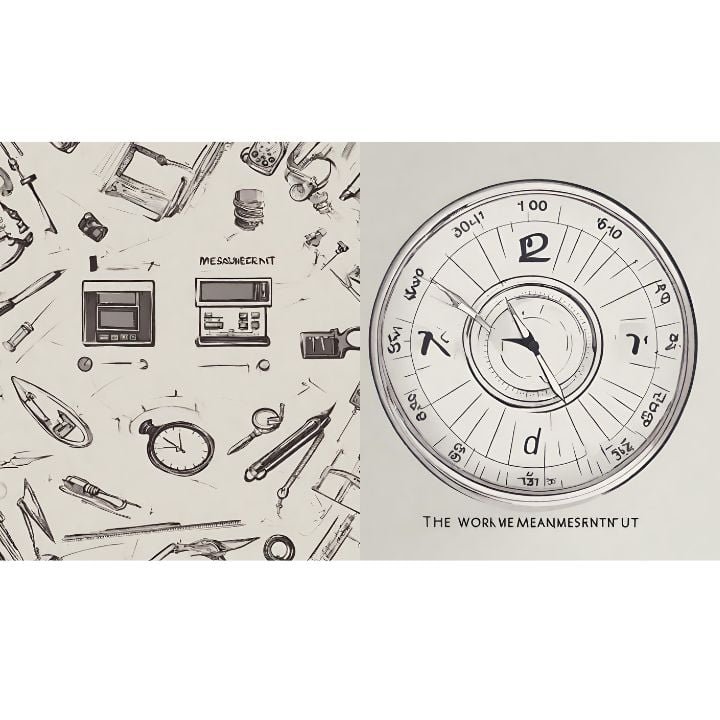Real-World Applications of Ergonomics in Manufacturing Systems
In the competitive landscape of modern manufacturing, optimizing efficiency and ensuring worker well-being are paramount. This is where workplace ergonomics plays a pivotal role. Far from being just a buzzword, workplace ergonomics is the science of designing the job to fit the worker, rather than forcing the worker to fit the job. It involves understanding the physical and psychological capabilities of employees and designing workstations, tools, and processes to maximize comfort, safety, and productivity. This article explores 7 critical real-world applications of ergonomics in manufacturing systems that not only enhance operational efficiency but also significantly reduce injuries and boost employee morale.
Table of Contents
- What is Workplace Ergonomics and Why it Matters in Manufacturing?
- 7 Real-World Applications of Workplace Ergonomics
- The Tangible Benefits of Implementing Workplace Ergonomics
- Getting Started with Ergonomic Improvements
- Conclusion
What is Workplace Ergonomics and Why it Matters in Manufacturing?
Workplace ergonomics is a multidisciplinary field focusing on the interaction between humans and their work environment. In manufacturing, this means designing systems and processes that reduce physical stress, mitigate injury risks, and improve overall performance. Poor ergonomic design can lead to musculoskeletal disorders (MSDs), such as back pain, carpal tunnel syndrome, and tendonitis, which are prevalent in manufacturing settings. Addressing these issues through ergonomic interventions is not just about compliance; it’s a strategic investment in human capital and operational excellence. By focusing on ergonomic principles, manufacturers can create safer, more comfortable, and ultimately more productive environments for their workforce.
7 Real-World Applications of Workplace Ergonomics
Here’s how workplace ergonomics is applied effectively in various manufacturing scenarios:
1. Optimized Workstation Design
A fundamental application of ergonomics is designing workstations that accommodate the varying physical characteristics of workers. This includes adjustable height workbenches that allow employees to switch between sitting and standing, reducing static load. Implementing “reach zones” ensures that frequently used tools and components are within easy access, minimizing awkward postures and overstretching. Angled work surfaces can also reduce wrist deviation for precision tasks, greatly improving comfort and reducing strain over long shifts.
2. Smart Tool and Equipment Selection
Choosing the right tools is critical. Ergonomically designed tools often feature better grips, lighter weights, and power assistance to reduce the force required by the user. For instance, using torque wrenches with reaction bars prevents wrist injuries, and scissor lifts or hoists eliminate the need for manual lifting of heavy items. Automated guided vehicles (AGVs) or robotic arms for repetitive, heavy lifting tasks exemplify how technology integrates with ergonomics to protect workers and streamline production.
3. Repetitive Task Management
Many manufacturing jobs involve highly repetitive movements, which can lead to cumulative trauma disorders. Ergonomic strategies here include job rotation to vary muscle groups used, incorporating micro-breaks, and automating portions of repetitive tasks. Designing fixtures that hold parts securely, reducing the need for continuous gripping, also lessens strain. Implementing pedal-operated clamps instead of manual ones is another practical example.
4. Manual Material Handling Solutions
Lifting, carrying, pushing, and pulling are common in manufacturing and are major causes of back injuries. Ergonomic solutions include providing mechanical aids like forklifts, pallet jacks, and conveyor systems. When manual lifting is unavoidable, training employees on proper body mechanics and lifting techniques (e.g., squatting instead of bending at the waist) is essential. Packaging design can also be optimized to include handles or reduce overall weight, making items easier to manage.
5. Environmental Factors Control
The physical environment significantly impacts worker comfort and performance. This includes controlling lighting, noise, and temperature. Adequate, glare-free lighting reduces eye strain, particularly for detailed work. Noise reduction through engineering controls (e.g., sound-absorbing materials, machinery enclosures) prevents hearing loss and improves communication. Maintaining a comfortable temperature range prevents heat stress or cold-related discomfort, which can both impact dexterity and focus.
6. Training and Education Programs
Even the best ergonomic designs are ineffective without proper training. Employees need to understand ergonomic principles, how to use ergonomically designed equipment correctly, and the importance of reporting discomfort early. Training can cover topics like proper posture, safe lifting techniques, stretching exercises, and identifying potential ergonomic hazards in their own workspaces. Empowering workers with this knowledge makes them active participants in their own safety and well-being.
7. Proactive Injury Prevention and Management
A robust ergonomic program includes systems for identifying, reporting, and managing work-related injuries early. This involves regular ergonomic assessments of workstations, incident reporting mechanisms, and providing prompt medical attention and rehabilitation when injuries occur. Implementing a continuous improvement loop for workplace ergonomics ensures that lessons learned from incidents lead to systemic changes, further reducing risks and fostering a culture of safety. Regular feedback loops with employees are vital for identifying nascent issues before they escalate.
The Tangible Benefits of Implementing Workplace Ergonomics
The return on investment for ergonomic initiatives is significant. Companies that prioritize ergonomics often see:
- Reduced Injuries and Illnesses: Lower rates of MSDs mean fewer workers’ compensation claims and reduced healthcare costs.
- Increased Productivity: Comfortable workers are more efficient and make fewer errors. Eliminating awkward postures or excessive force allows tasks to be completed faster and with higher quality.
- Improved Quality: Reduced fatigue and discomfort lead to better concentration and consistency in work output.
- Lower Absenteeism and Turnover: A safer, more comfortable work environment leads to higher job satisfaction and employee retention.
- Enhanced Employee Morale: Workers feel valued when their safety and well-being are prioritized, fostering a positive work culture.
To illustrate the impact, consider this comparison:
| Aspect | Traditional Manufacturing Setup | Ergonomically Optimized Setup |
|---|---|---|
| Workstation Height | Fixed, one-size-fits-all | Adjustable for sitting/standing |
| Tool Selection | Heavy, manual, generic grips | Lightweight, power-assisted, custom grips |
| Material Handling | Mostly manual lifting | Automated assists, lift tables, conveyors |
| Injury Rates | High musculoskeletal disorder (MSD) rates | Significantly reduced MSDs |
| Productivity | Moderate, prone to errors from fatigue | High, consistent, fewer errors |
Getting Started with Ergonomic Improvements
Implementing ergonomic changes can seem daunting, but it often starts with small, incremental steps. Begin by conducting a thorough ergonomic assessment of your current operations. Identify high-risk tasks and areas where workers frequently report discomfort. Involve employees in the process; their firsthand experience is invaluable. For guidance on creating a comprehensive safety framework, you might find our guide on effective safety management strategies helpful. Remember, continuous improvement and regular reviews are key to sustaining an effective ergonomic program. Further insights and industry best practices can be found through resources like OSHA’s ergonomics guidelines.
Conclusion
The integration of workplace ergonomics into manufacturing systems is no longer an optional luxury but a strategic imperative. By proactively designing jobs, tools, and environments that respect human capabilities, manufacturers can unlock significant benefits in safety, productivity, quality, and employee satisfaction. Investing in ergonomics is investing in a healthier, more efficient, and more sustainable future for your workforce and your business.


